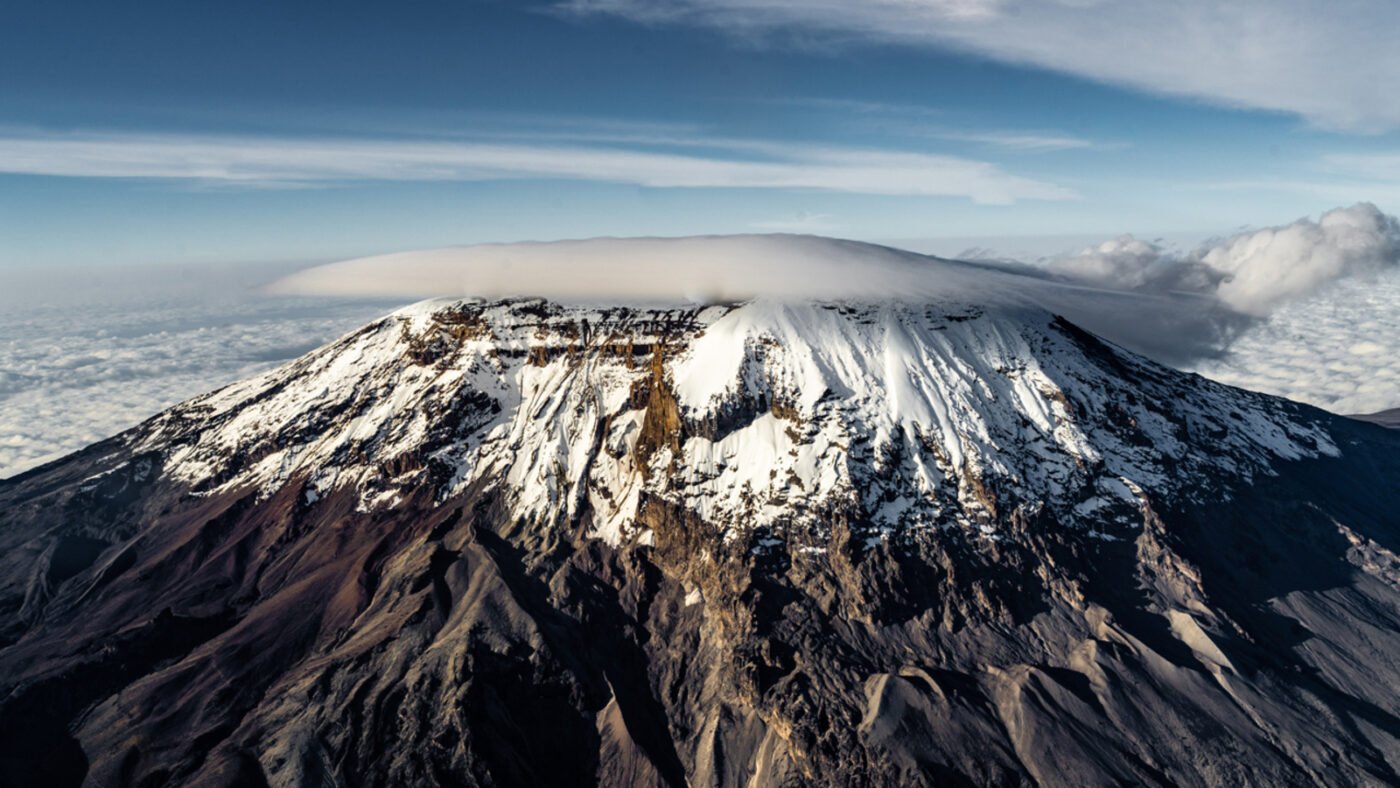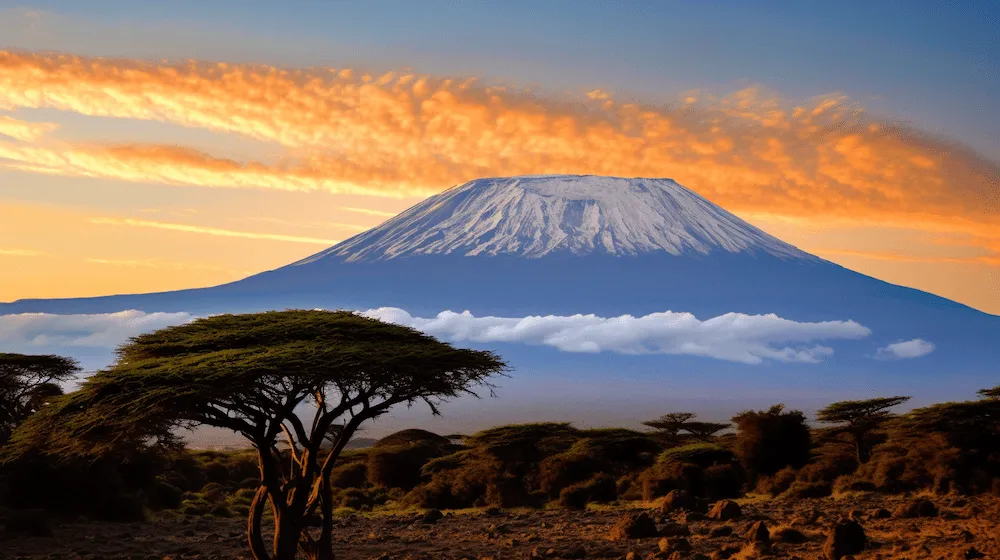Introduction to Mount Kilimanjaro
Mount Kilimanjaro, standing at an awe-inspiring height of 5,895 meters (19,341 feet), is not only Africa’s highest peak but also the world’s tallest free-standing mountain. Located in northeastern Tanzania near the border with Kenya, Kilimanjaro draws adventurers, nature lovers, and thrill-seekers worldwide. Its iconic snow-capped summit and scenic, diverse terrain offer a rare opportunity to experience five distinct ecological zones, each with its unique vegetation and wildlife.
This towering marvel is one of the Seven Summits, making it a must-climb mountain for aspiring climbers. The adventure of climbing Kilimanjaro is both challenging and rewarding, attracting climbers from all walks of life. In this guide, we’ll cover everything you need to know about Mount Kilimanjaro’s height, the climbing routes, tips for scaling this iconic peak, and what to expect along the way.
Understanding Mount Kilimanjaro’s Height
A Record-Breaking Free-Standing Mountain
Standing at 5,895 meters, Mount Kilimanjaro is celebrated as the highest point on the African continent. This immense height places it among the Seven Summits, making it a natural bucket-list destination for climbers. What makes Kilimanjaro unique is that it’s a free-standing mountain, meaning it isn’t part of a larger range like the Himalayas or Andes. Instead, it rises dramatically from the surrounding plains, towering over the African savannah and offering breathtaking views for miles around.
How Kilimanjaro’s Height Impacts the Climb
Mount Kilimanjaro’s impressive elevation introduces several unique challenges for climbers. High altitude and reduced oxygen levels impact the body, making acclimatization essential for a successful summit. Climbers can experience symptoms of altitude sickness as they ascend, so it’s vital to take the journey slowly and follow a structured itinerary.

The Unique Structure of Mount Kilimanjaro
Kilimanjaro is composed of three volcanic cones: Kibo, Mawenzi, and Shira. Among these, Kibo is the tallest and houses Uhuru Peak, the highest point in Africa. Mawenzi and Shira are inactive, with Shira being the oldest and most eroded cone. Here’s a breakdown:
- Kibo: 5,895 meters – Contains Uhuru Peak, the ultimate destination for climbers.
- Mawenzi: 5,149 meters – Rugged and less accessible, Mawenzi is the third-highest peak in Africa.
- Shira: 3,962 meters – Now eroded, Shira was likely the first cone to erupt.
Climbing Routes to Reach Kilimanjaro’s Summit
Mount Kilimanjaro offers multiple routes to the summit, each with unique characteristics, scenery, and difficulty levels. Here’s an overview of the most popular routes:
1. Marangu Route
- Nickname: “Coca-Cola Route”
- Duration: 5-6 days
- Difficulty: Moderate, considered the easiest path but with lower acclimatization time.
- Features: The only route offering hut accommodations, which is appealing to climbers who prefer a bit of comfort.
2. Machame Route
- Nickname: “Whiskey Route”
- Duration: 6-7 days
- Difficulty: Challenging, with steeper ascents.
- Features: Known for its scenic views, the Machame Route offers diverse terrain and great acclimatization, making it one of the most popular routes.
3. Lemosho Route
- Duration: 7-8 days
- Difficulty: Moderate to difficult, with an extended acclimatization period.
- Features: Lush rainforest, high scenic value, and lower crowd levels. It joins the Machame Route at the Shira Plateau.
4. Rongai Route
- Duration: 6-7 days
- Difficulty: Moderate
- Features: The only route approaching Kilimanjaro from the north, offering a different perspective. Known for being quieter and offering a gentle climb initially.
5. Northern Circuit
- Duration: 8-9 days
- Difficulty: Challenging, with the longest route allowing the best acclimatization.
- Features: A remote and scenic route that circles the mountain. It has one of the highest success rates due to the gradual ascent.
6. Umbwe Route
- Duration: 5-6 days
- Difficulty: Very challenging
- Features: The steepest and shortest route to the summit, suitable for experienced climbers. It offers breathtaking views but has a lower success rate due to rapid ascent.

Preparing for the Altitude: Acclimatization and Physical Fitness
Altitude Sickness: Risks and Symptoms
The higher altitude of Kilimanjaro poses a risk of altitude sickness, a condition climbers should prepare for as they reach higher elevations. Symptoms like headache, nausea, dizziness, and fatigue are common, especially for those unaccustomed to high altitudes. To minimize the risk of altitude sickness, climbers are advised to “climb high, sleep low” by ascending during the day and descending slightly for overnight rest.
Training and Physical Fitness
Physical fitness is crucial for Kilimanjaro climbers, as the trek involves multiple days of hiking through rugged and varied terrain. Ideally, climbers should engage in cardio activities like running, hiking, or cycling to build endurance, as well as strength training for core and leg muscles.
Exploring Kilimanjaro’s Ecological Zones
Mount Kilimanjaro’s immense height allows climbers to experience five ecological zones as they ascend:
- Cultivated Zone (800-1,800 meters): Surrounding the base of the mountain, this area is covered in farmland and lush vegetation, mainly used for agriculture.
- Rainforest Zone (1,800-2,800 meters): Known for dense greenery and frequent rainfall, the rainforest is home to various animals, including monkeys, antelope, and exotic birds.
- Heather and Moorland Zone (2,800-4,000 meters): This region features open terrain with low shrubs, grasses, and striking giant heathers and lobelias. Temperatures drop, and plant diversity decreases.
- Alpine Desert Zone (4,000-5,000 meters): Characterized by rocky terrain, sparse vegetation, and harsh weather, this zone has extreme temperatures and limited wildlife.
- Arctic Zone (5,000 meters and above): The final zone before the summit, with icy conditions, snow, and freezing temperatures. The iconic glaciers of Kilimanjaro are found here, as well as breathtaking views over the plains below.
The Summit: Reaching Uhuru Peak
Reaching Uhuru Peak, the highest point on Kilimanjaro, is a monumental achievement. Climbers typically begin their summit attempt around midnight to reach the peak by sunrise. Standing at the summit and witnessing the sun rising over the African continent is a memory that stays with climbers for a lifetime.
Essential Gear for the Climb
Proper gear is essential to withstand the changing conditions on Kilimanjaro. Here’s a basic list of what climbers will need:
- Clothing: Layered clothing, including thermal base layers, fleece jackets, waterproof outer layers, gloves, hats, and scarves.
- Footwear: Sturdy hiking boots with good ankle support and thick socks to prevent blisters.
- Sleeping Gear: A warm sleeping bag rated for sub-zero temperatures.
- Trekking Poles: These help with balance and reduce strain on the knees during descents.
- Backpack: A durable, comfortable backpack to carry essentials, like snacks, water, and a camera.
Choosing the Best Time to Climb Kilimanjaro
The best times to climb Mount Kilimanjaro are from January to March and June to October. These months offer more stable weather, with clear skies and drier conditions, which enhance the chances of a successful summit attempt. The rainy seasons (April-May and November) make the climb more challenging due to muddy paths and slippery conditions, though some experienced climbers may prefer the solitude.
What to Expect on a Kilimanjaro Climb
- Daily Treks: Each day typically involves 4-7 hours of trekking, gradually increasing in altitude.
- Camping: Most routes involve overnight camping. Porters and guides set up campsites and carry supplies.
- Summit Night: The final ascent begins around midnight, with climbers reaching Uhuru Peak by sunrise.
A Journey Worth Taking
Conquering Mount Kilimanjaro is an experience of a lifetime, blending physical challenge, natural beauty, and personal achievement. Reaching the peak is a testament to endurance, willpower, and respect for nature. For climbers seeking adventure and a connection with the awe-inspiring African landscape, Kilimanjaro offers an unforgettable journey to the roof of Africa.

Ready to conquer Africa’s tallest peak? At Providence Safari, we offer expert-guided Kilimanjaro treks tailored to your needs. Our experienced guides and support team ensure a safe and memorable climb. Start your adventure today by booking your Kilimanjaro expedition with us at Providence Safari.

